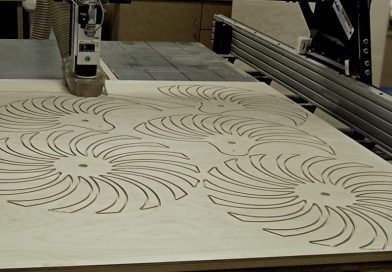How to Reduce Heat Generation When CNC milling?
Increase in profit margins is the goal of every CNC machining business. One of the major factors that help in improving profits is prolonged tool life for several operations like CNC milling, turning, facing etc. Tool life is not only impactful on costs incurred but also directly affects the quality of part produced. Although heat produced during machining operations is good for ductility and malleability, excess heat is however bad for business.
Since CNC machining businesses are known for their precision, accuracy and intricacy, it is inevitable to counteract the excess heat generated during machining operations using carefully crafted techniques based on experience. Let us have a look on the main techniques for this purpose and we shall focus on CNC milling of parts in particular.
Techniques for Elimination of Heat in CNC Milling:
Firstly, it is important to understand that the majority of energy in CNC milling is dissipated in small concentrated areas on the workpiece, mainly the area that is in contact with the tool. This local temperature spike can cause damage to the tool and the material that is being machined.
1. Use of a coolant or cutting fluid.
This is one of the most common and effective method of reducing heat generation. In this method a coolant is applied or flowed over the region where the machining is taking place, which is where the tool is in contact with the material. Cutting fluid reduces heat generation in many different ways.
Firstly, through convection, in which heat is transferred from the tool and material into the coolant, thereby reducing the temperature of both the tool and the material being machined. Coolants also serve as lubricants, which decrease the friction between the tool and the material. This massively decreases the heat that is generated by the friction during CNC milling.
Coolant can be used in a number of modes like:
-
- Flood
- Minimum quantity lubricant
- High-pressure
- Mist.
Using the right mode of delivery for any specific process is very important in machining as the wrong method can damage the tool. The coolant can also be air, water, or oil based. Selection of the coolant is done according to the process, material and the tooling that is going to be used.
2. High-Efficiency Milling .
This is a machining strategy that uses a larger axial depth of cut (ADOC) coupled with a lesser radial depth of cut (RDOC) to give optimized performance in machining. This method is used in CNC milling for roughing process in which large amount of material is removed from workpiece.
This method has a high material removal rate (MRR) as well as high speed and feed rate. These specific properties cause the tool to not only be engaged at a single point (cutting edge) but a larger area of the tool is used to cut the workpiece.
This causes the heat to be uniformly spread in the whole tool thereby reducing the maximum temperature of the tool. In this way, the tool is not damaged due to a localized increase in temperature.
3. Cutting Speed and Feed Rates.
This method is simple and the easiest but comes with tradeoffs. There is a direct relationship between the temperature produced at the tool and the cutting speed and feed rate. By reducing the feed rate and the cutting speed, the heat generation is decreased.
Hence, to reduce the maximum temperature of the tool and the workpiece, the cutting speed and feed rate need for CNC milling needs to be decreased but this has a big disadvantage. Decreasing cutting speed and feed rate will cause a drop in production rate, which is not acceptable in many cases. Therefore, this method is only used in cases where a high production rate is not required and custom CNC milling of prototypes is required.
4. Climb Milling.
The tool or cutter rotates in the direction of the feed in this technique. This method increases the heat transfer thereby decreasing localized high temperatures as well as decreases the generation of heat.
In this method, the chip size initially is the widest but gradually decreases as the process goes on. This causes the heat to be transferred to the chips instead of the tool. Hence, heat is not accumulated in the tool and the tool does not fail due to heat generation. Climb milling also prevents heat generation by reducing rubbing.
5. Making the Rake Angles Positive.
Tool geometry and the tool angle have a very critical role in heat generation and power requirements in CNC milling. Cutting with a positive rake angle will reduce heat generation compared with a negative rake angle. A rake angle is the angle from the tool’s rake surface with reference to a plane.
A positive rake angle is when the sum of the wedge angle of the cutting tool and its clearance angle fall below 90 degrees measured orthogonally.. Positive rake angle reduces the rubbing of the tool with the workpiece thereby decreasing the heat produced by friction during CNC milling and in return, increases tool life.
Conclusion:
The five principles discussed above are the key to elongation of tool life leading to maximization in profits for CNC milling businesses. To choose the best solution, please contact experts from well-known CNC milling services like Wayken.
However, basics dictate that when roughing or large material removal rate is involved, High Efficiency Milling is a very efficient technique. It must be noted that these techniques are always used in conjunction with each other since none of them can work as a stand-alone solution for heat dissipation problems.








